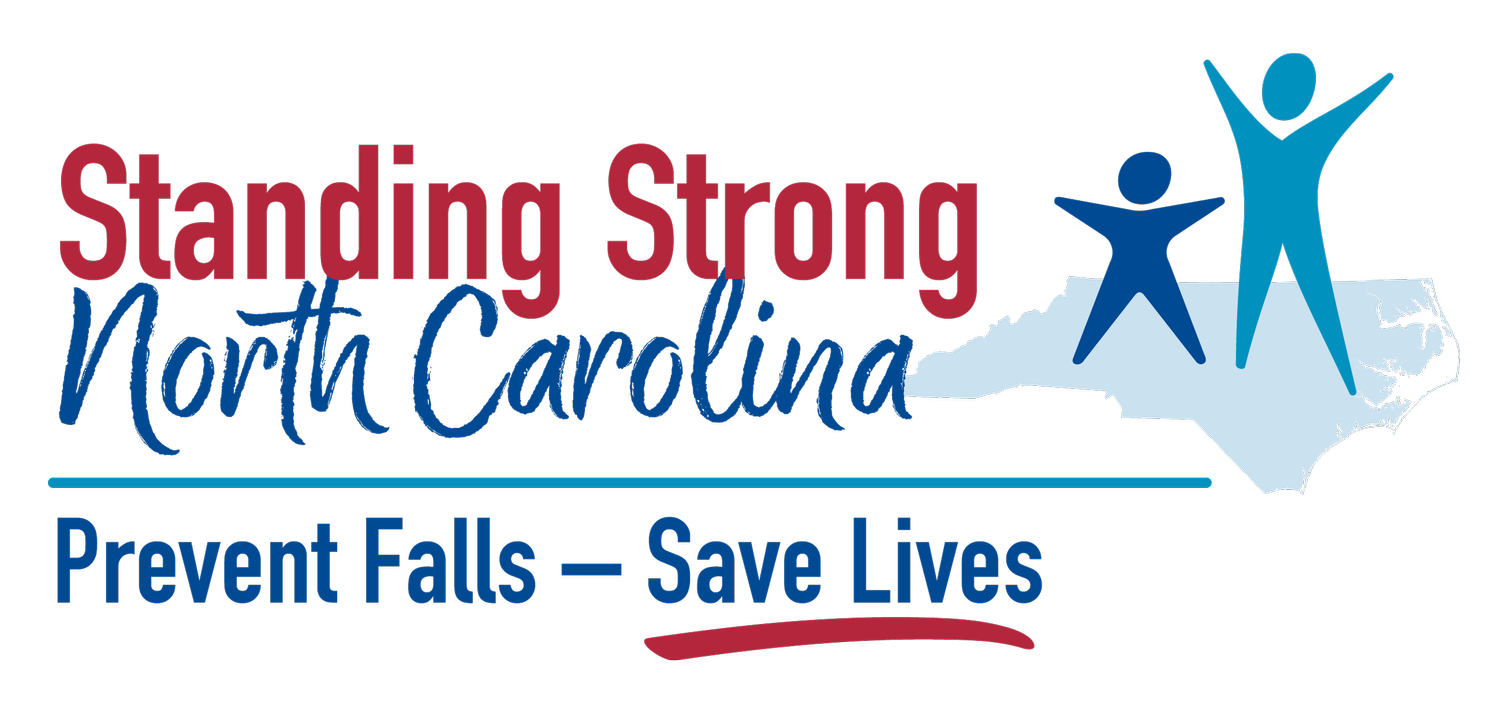Headstrong? Let’s find ways to talk about Standing Strong!
Headstrong anyone? We all can be a little bit stuck in our own ways, especially as our years have taught us what works and doesn’t work for our own needs. You know where the ladder is and how to use it. Your partner has been walking to the bathroom in the dark for years with no problems. Your older neighbor loves slide-on sandals for working in the garden.
Photo by SHVETS production from Pexels
It can be hard to recognize that as we get older the habits and routines that have been working fine for years might not be as fine. Our bodies are changing constantly; the balance, strength, coordination, vision and sensation we had 10 years ago are different than they are today (for better or for worse!). It follows that habits and routines might also have to change.
As we notice these potentially risky situations around us, what steps can we take to help those we care about to stay safe? One in four adults aged 65+ falls each year, and many of these falls are preventable. Let’s talk through some ways we can prevent falls and encourage change - even when someone is resistant.
Be Curious -
Build Trust and Ask Questions
Photo by Kampus Production from Pexels.
Discover the WHY behind a person’s actions. Consider how their habits, comfort, physical abilities, and lifelong preferences play into their actions. What is their goal?
Evaluate where they are in thinking about change. All decisions are made on a spectrum between pre-contemplation (not yet thinking about making a change) and maintenance (keeping up a change or action that we have already started). See these great examples below:
(Examples of the Stages of Change from Kiyoshi-Teo et al, 2023)
2. Acknowledge their Knowledge:
Each person is the expert on their own bodies, needs, and goals. Plan to collaborate, rather than dictate. Be a member of their fall prevention team.
Photo by Centre for Ageing Better from Pexels
3. Start small - Find THEIR motivation.
Begin a conversation around the risky behavior and how it relates to their goals and values. Is there a way this goal can be met in a less risky way?
Consider your partner leaving the light off during nightly trips to the bathroom.
If their goal is to not wake you, offer reassurance that low lighting isn’t a disturbance. (Contemplation-Preparation stages)
If their goal is to not disturb their own sleep cycle with lighting, offer a low level light in a red/orange hue. (Contemplation-Preparation stages)
If they haven’t noticed a need for change (Pre-contemplation), share the concerns you have. Use ‘I’ statements rather than ‘you’ statements when possible: “I noticed you stumbled on the way to the bathroom last night. It made me nervous. What happened?” vs “You almost fell last night - your balance has gotten bad.”
Consider your neighbor wearing flip-flops while gardening.
If their goal is ease of putting on shoes or taking off the shoes, inquire about different, more supportive styles. (Contemplation-Preparation stages)
If they don’t see the need for change (Pre-contemplation), share the concerns you have. Use ‘I’ statements rather than ‘you’ statements when possible: “I noticed your shoe slipped while we were chatting yesterday, and it made you stumble a little bit. It made me nervous for you! Are these your favorites? I wonder if we can find something that feels similar, but stays on your foot a little better.” vs “You almost fell when your shoe came off yesterday. You need new shoes.”
Stay flexible and curious:
Photo by Zen Chung from Pexels.
Keep in mind that tricky conversations usually don’t happen in one sitting! Continue to notice and bring awareness to risky situations, focusing on using ‘I’ statements. If the person you are worried about isn’t ready to change this particular risk, they may be more open to change in a different area that is more aligned with their current goals.
There are many different risk factors for falls, and most falls have more than one causal factor. Changing even one of these risk factors can help reduce overall fall risk! Success in one area may open the door for change in another area - stay flexible and continue to be curious.
Resources and support to talk about falls:
Let’s Talk About Falls: 5 Easy Ways to Talk to Your Family and Friends About Preventing Falls
Resources for different risk factors, such as footwear or lighting, in the examples above.
Have other ideas for blog topics? Please contact us here!
Author: Marie Dagger, Occupational Therapist, Orange County Department on Aging, NC Falls Prevention Coalition Steering Committee
Editor: Ellen Bailey, Chair, NC Falls Prevention Coalition, Standing Strong NC





